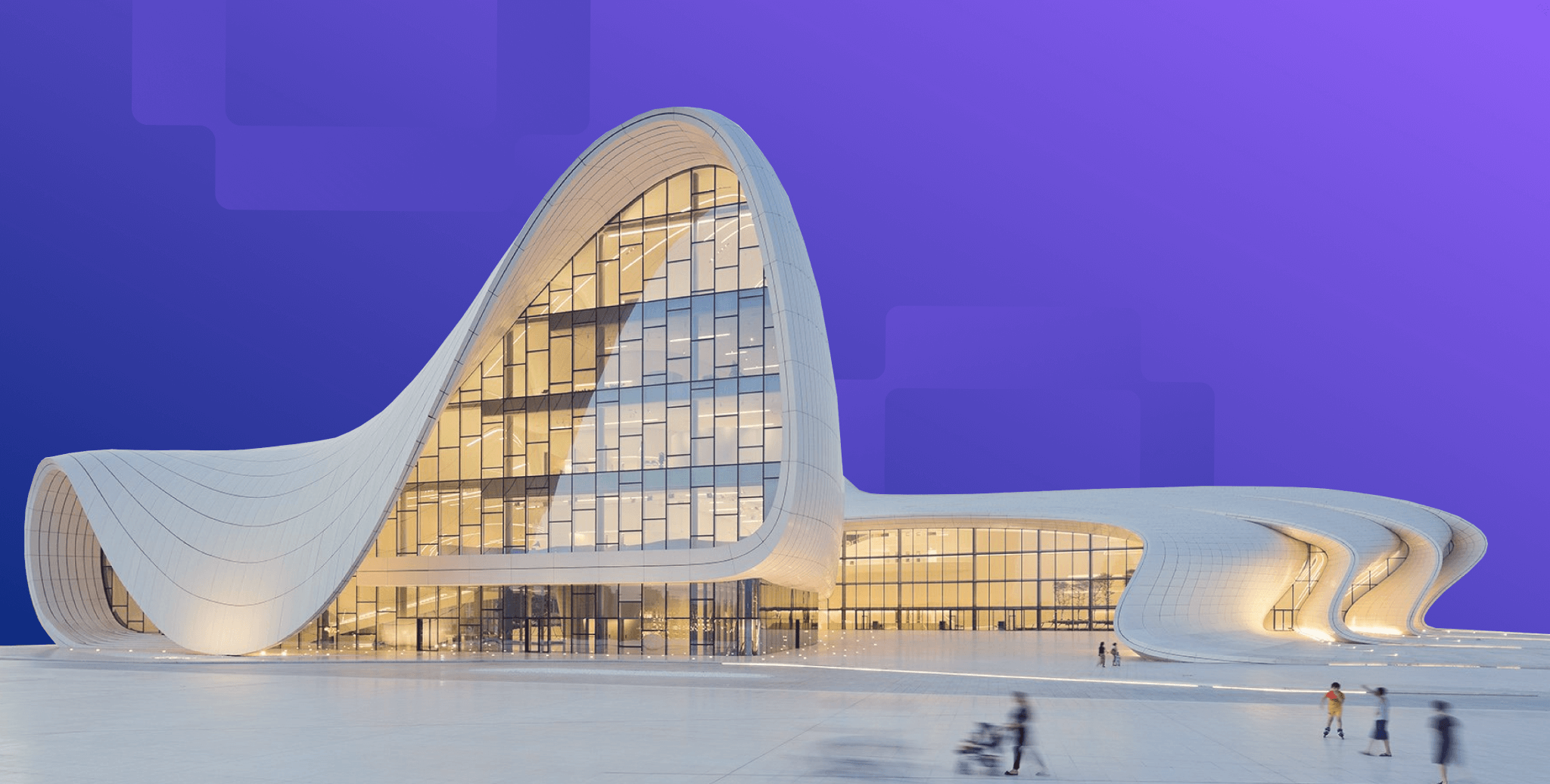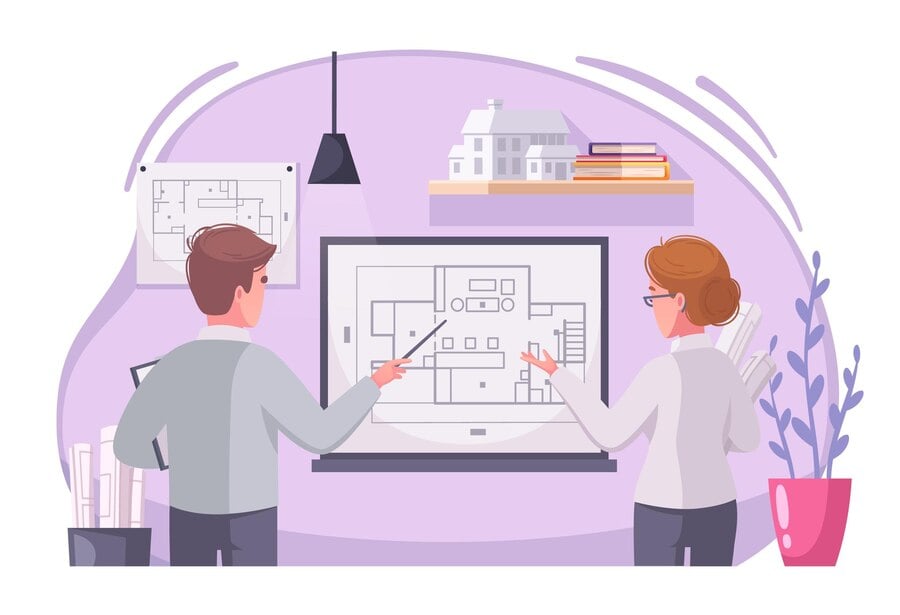Top Computational Design Trends Reshaping AEC in 2025

Table of Contents
Computational Design architecture is one of the emerging careers set to change the landscape of the AEC (Architecture, Engineering, and Construction) industry in 2025. It is constantly evolving and adapting to the latest and advanced technologies. In this blog, we will discuss the most essential AEC trends defined for 2025. Whether you are an experienced professional or a graduated student looking for Computational Design jobs, knowing these trends will help you find the perfect job. So, let’s explore the emerging Computational Design trends and build a more sustainable and smart world!
What is Computational Design?

Computational Design is a process that uses a combination of algorithms and parameters to generate design solutions. In this method, every step is translated into coded computer language, and the software uses this information with specific parameters to create algorithms that generate design models based on requirements. It presents the transformation of traditional design methods to a dynamic and data-driven approach to developing structures and design models.
So, instead of relying on manual drawings, architects can use computational tools to explore geometrics, innovative forms, and difficult patterns. It provides designers with creativity, consistency, and flexibility to create unique designs that fit the project.
Also check out: Benefits of emerging Computational design developments in the AEC industry
Benefits of Computational Design for Architects

Computational Design has emerged as one of the transformative processes in the architecture field, providing multiple benefits to the architects. Advances in Computational Design allow architects to consider creativity for sustainability, reshaping the roles of computational designers. Here are the benefits of Computational Design in the architectural process:
1. Quick Design Iteration
Computational Design facilitates designers with quick design amendments and modifications. Using parametric modelling, architects and engineers can adjust the parameters, such as the relationship between the objects, dimensions, etc., to generate multiple design variations. Any changes to the initial parameters will be done automatically, saving time on manual adjustments. These parameters define the properties of the models and can be easily adjusted, providing flexibility and control over the design.
2. Increased Productivity
Computational Design improves design process efficiency and productivity by automating repetitive and complex tasks. The designers use algorithms to set rules and parameters for the creation process, allowing architects and engineers to concentrate more on the creative elements of their work. At the same time, the software takes care of the repetitive tasks. It also saves time and lowers the possibility of errors arising from manual adjustments. Besides, the modifications made to one area of the model automatically update other areas, guaranteeing accuracy and consistency.
3. Early-Stage Simulation and Testing of Designs
Computational Design allows architects to simulate and test the design at the design stages. Structural simulations, material optimisation, and different architectural performance analyses are among the used test tools. These models provide insightful information and helpful feedback to the Computational Design firms that enable architects to make informed decisions and changes to design that enhance its effectiveness and viability. Computational Design offers the flexibility to make these changes effectively based on precisely simulated scenarios, whether the changes are modifying the building shape to maximise solar exposure or changing the structure for optimal weight distribution.
4. Better Project Management
Computational Design also helps in project management and scheduling software, allowing architects to keep track of professions and make amendments accordingly. With advances in Computational Design, architects can also estimate building costs and other potential risks.
5. Design Exploration
It is one of the core responsibilities of Computational Design jobs. Architects can explore a wide range of design alternatives without putting in the manual effort. Generative algorithms and parametric modelling enable the production of multiple designs by just adjusting the parameters. It allows the architects to experiment with many different layouts, forms, and configurations, which also facilitates design optimisation for performance and looks.
6. Cost Control
Architects can make well-informed decisions that are compatible with project budgets by utilising Computational Design. Controlling construction costs can be made simpler by the ability to analyse costs, material quantities, and resource allocation. Architects can spot economical design solutions and lower the possibility of budget overruns.
7. BIM Integration
BIM is a process that is very different from the traditional way of building construction. It has become more effective and efficient, which helps create a better connection between the construction workers working in the field and the client. In this, Computational Design plays a crucial role in integrating the works, documentation, and communication at the same time. Besides, it also helps to contemporise the work done on the field with the project schedule.
Also check out: Understanding Computational Design (The Ultimate Guide) - 2024
Top Trends in Computational Design that Will Prevail in 2025
Computational Design architecture is dynamic, evolving with rising technologies and processes. As we move towards 2025, multiple trends are poised to reshape the Computational Design architecture jobs. Here are the top trends in Computational Design:
1. Trend: The Emergence of Digital Twins in Building
Digital twins are duplicates of physical objects, systems, or methodologies. During construction, a digital twin represents a precise building model, which provides every detail, from the initial design to the current operation and maintenance. It is one of the best ways to manage the project with real-time data and advanced analytics. The best part is that they can also be changed based on the data.
Reason: Digital twins have multiple advantages in the AEC industry as they offer unparalleled visibility to the project's progress, which helps monitor real-time data and make informed decisions. Besides this, the digital twins enable collaboration among the other team members, clients, and other parties involved. Some other benefits are reduced errors, reduced delays, and better quality.
2. Trend: Integrated Project Management Solutions
In the construction sector, integrated project management solutions are becoming increasingly common. Utilising digital tools and platforms to centralise and optimise project management procedures is part of these solutions. They enable teams and project managers to organise, execute, and oversee construction tasks more successfully and efficiently. Integrated project management solutions cover various topics, such as communication, resource allocation, budgeting, scheduling, and risk management. They frequently use mobile apps and cloud-based software to offer real-time access to project data and collaboration tools.
Reason: The construction process is complex, with multiple pieces needing to fit together without errors. This is exactly where integrated project management helps, as it incorporates all the aspects of construction, from strategising to executing. Almost all Computational Design firms use integrated project management solutions to make the data more accessible for all the members involved in the project. This holistic process saves time, promotes transparent communication and a collaborative environment, and reduces the risk of errors.
3. Trend: Augmented Reality (AR) and Virtual reality (VR)
Augmented reality and virtual reality are revolutionising the appearance of projects in the AEC industry. In 2025, this is expected to become the key tool, with enhanced versions adding new aspects to the AEC industry. It involves digital information like project data or 3D models, which can be viewed via smartphones.
Reason: Augmented and virtual reality are impressive ways to show construction projects. It helps provide better project understanding to the client and other team members like engineers, stakeholders, builders, etc. It also opens remote participation for the design reviews and site inspection. One of the key benefits is that it reduces the chances of major errors, saves costs, provides a virtual tour, and helps make the right decision.
4. Trend: Collaboration and Communication
Although communication and collaboration have always been essential in the construction industry, they will play an even more crucial role in 2025. The trend is about using cutting-edge digital platforms and tools to enable smooth communication and collaboration between all parties involved in a construction project.
Reason: Digital tools always play a crucial role in a collaborative environment by bridging the gap, providing enhanced communication, and embracing a data-driven approach. By sharing real-time data, documents, updates, and feedback, computational design firms can meet clients' expectations and reduce potential errors and delays.
Also check out: A Brief History of the Evolution of Computational Design
Also Watch:
Conclusion
Overall, Computational Design is a growing field, and the architectural landscape continues to evolve with time. It has now merely become a trend but a transformation to shape the future of architecture. So, if you are looking for computational design jobs, contact Novatr today and apply for a Master Computational Design Course to enhance your skills!
For a better understanding of the industry updates, you can also check out our Resource Pages!

 Thanks for connecting!
Thanks for connecting!

%20(1).png)
%20(1).png?width=767&height=168&name=MCD%20B%20(Course%20Banner)%20(1).png)
.png)
-1.png)


.jpg)
.jpg)

